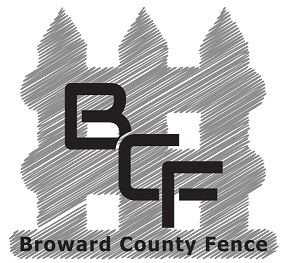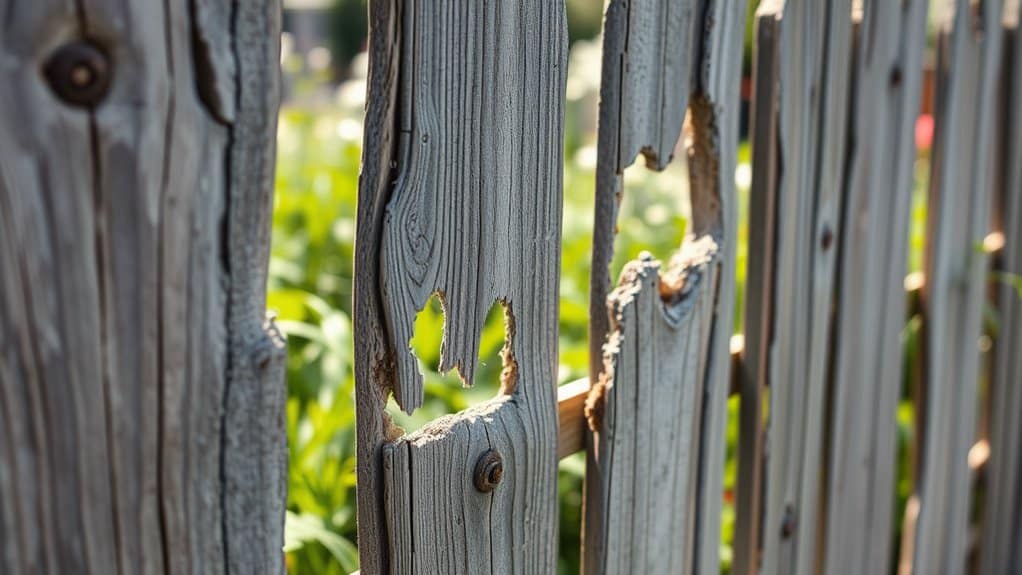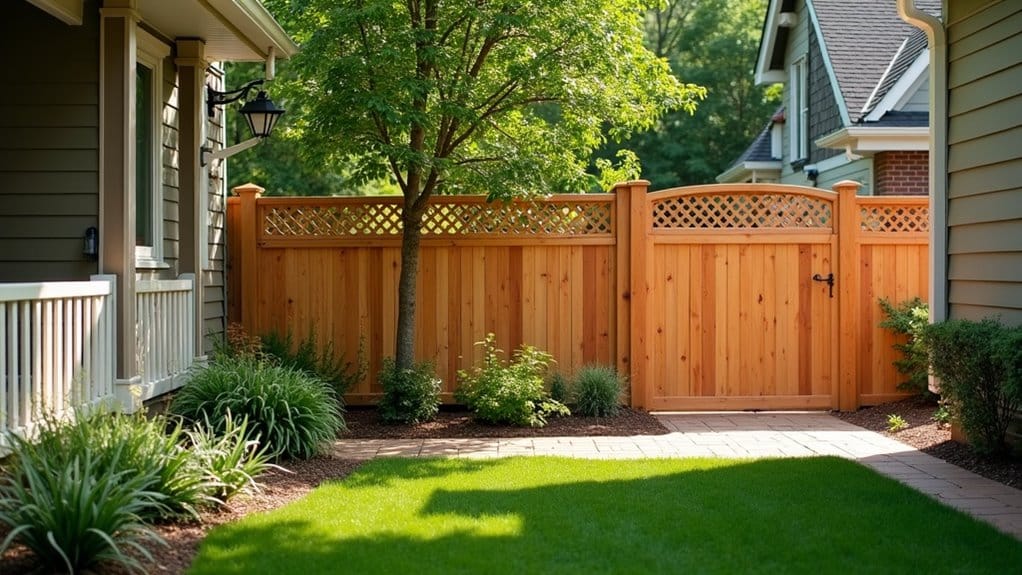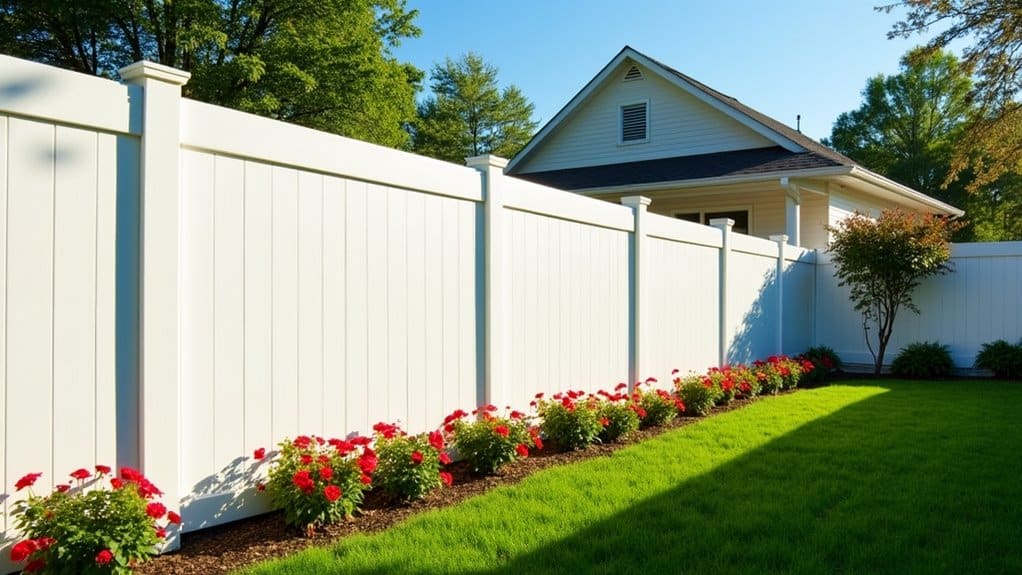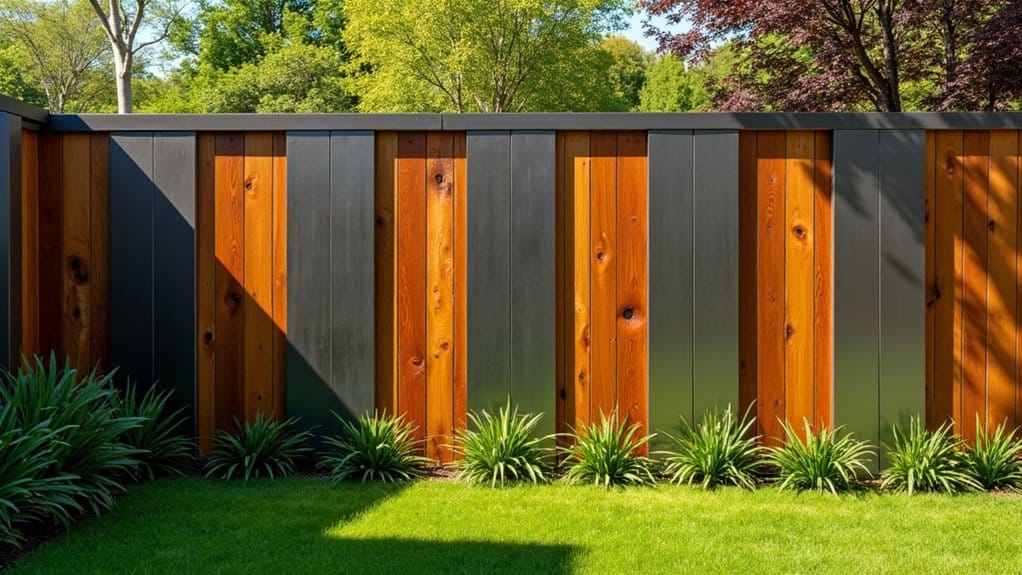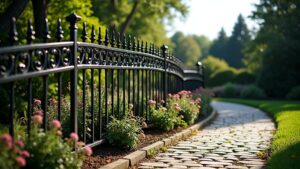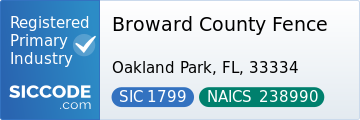Recognizing when to replace your residential fence is crucial. Here are key signs to watch for:
- Visible Decay: Look for signs of rotting or damage.
- Leaning Sections: If parts of the fence are leaning or unstable, its structural integrity is at risk.
- Frequent Repairs: Constant fixes and rising maintenance costs often signal deeper issues.
- Compromised Privacy/Security: A fence that no longer keeps your yard private or safe, especially with broken sections, needs urgent replacement.
- Aesthetic Decline: An old or damaged fence can decrease your property value.
- Style Upgrade: If you're looking for a fresh look, it might be time for a new fence.
- Pest Issues: If pests are getting through, it's time for a change.
Stay tuned for more details on these signs and what they mean for your home.
Key Takeaways
- If you see visible decay like rotting wood or mold, it's time for a new fence.
- A fence that leans or has sagging sections is not only unstable but also unsafe, indicating it should be replaced.
- If you're frequently repairing your fence and costs keep rising, it's often smarter to invest in a new one rather than ongoing fixes.
- Gaps or broken areas in your fence can leave your property vulnerable, so replacing it is crucial for your security.
- An aesthetically declining fence, such as one with peeling paint or broken boards, can hurt your property's value and curb appeal, making replacement necessary.
Visible Decay and Damage
When you see visible decay and damage on your residential fence, it's important to take action quickly. Signs of rotting wood, like soft spots and musty smells, mean your fence is nearing the end of its life.
Look out for splintering, chipping, and mold growth, as these can weaken your fence and affect its appearance. Insect infestations, particularly from termites or carpenter ants, can also be a serious issue.
Surface damage such as peeling paint or rust spots exposes the wood to the elements, speeding up decay. If you notice large areas of peeling paint or rust, it might be time to replace the fence.
Gaps between boards or warped sections aren't just eyesores; they can be safety hazards. Loose or missing parts can further compromise your fence's stability. Frequent repairs can indicate that a replacement is needed sooner rather than later.
To prevent decay, regular maintenance is essential. Use the right sealants for wooden fences and keep an eye out for moisture damage. Additionally, selecting quality materials can significantly enhance your fence's durability and resistance to moisture and rotting.
Addressing these issues early can save you from expensive replacements later. Choose materials that resist decay for a longer-lasting fence.
Structural Instability
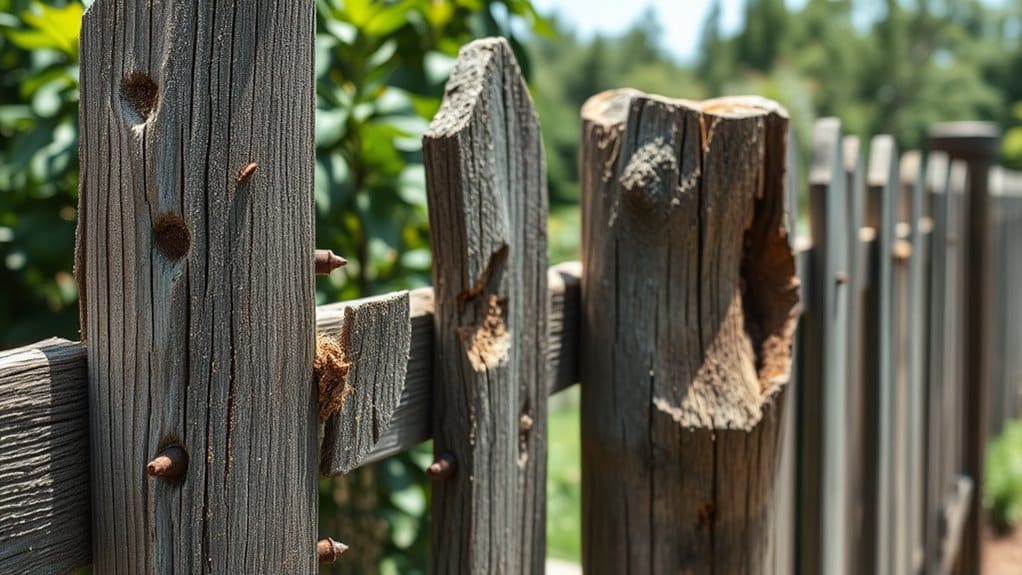
If your fence is leaning or sagging, it's a sign of structural instability that can lead to safety risks and aesthetic issues. This often happens due to rotting posts, unstable foundations, or shifting soil from erosion or tree roots. Acting quickly is crucial to prevent further damage. In Florida, a common factor contributing to this instability is shallow post depth, which may not provide adequate support in sandy soils.
Common causes include poor installation, like shallow post holes, and using low-quality materials. Harsh weather can worsen these problems, leading to expensive repairs later. To avoid structural instability, regularly inspect and maintain your fence. Use high-quality materials and ensure proper installation. Protective coatings can enhance wooden fence durability, and secure fastening of gates and panels can prevent sagging.
Regular inspections are vital for identifying early signs of leaning or tilting fence posts that may indicate deeper issues with the fence's integrity. If you notice instability, consider hiring a professional for safe repairs or replacement to protect your property's security and appearance.
Frequent Repairs Needed
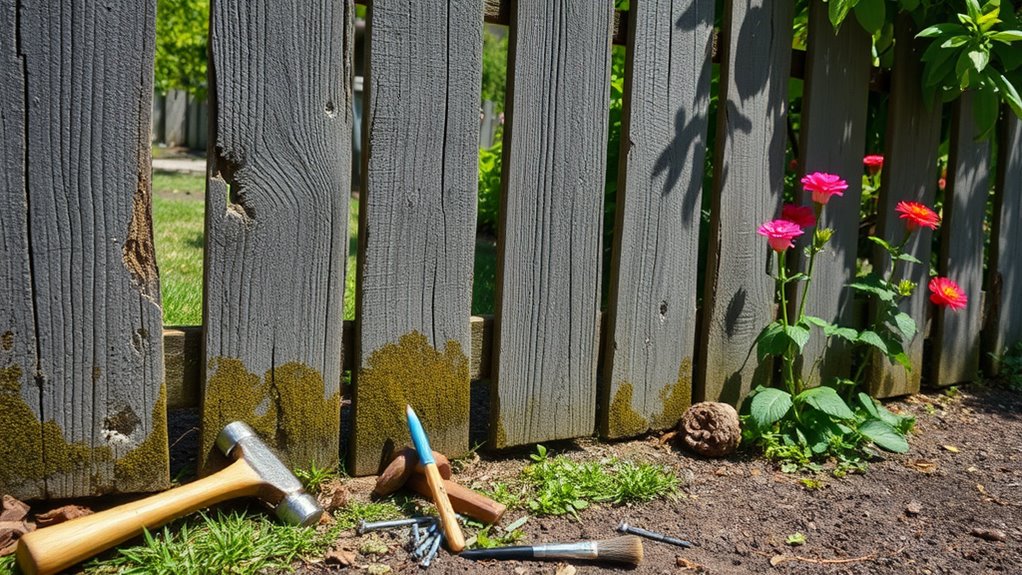
Frequent repairs on your fence often indicate deeper issues affecting its integrity. If you're always fixing it, it might be time to consider a replacement.
Here are some signs that repairs are becoming too common:
- Rot and decay: Act quickly to prevent further damage. Regular maintenance can help extend the lifespan of a fence.
- Leaning or sagging: This points to serious structural problems, as leaning can compromise stability and safety.
- Cracks, splinters, or missing pieces: These not only look bad but can also affect functionality.
- Rust or corrosion on metal fences: This might need cleaning or a full replacement.
If you find yourself facing these issues regularly, it's worth comparing the cost and effort of repairs to getting a new fence.
Regular inspections can catch minor issues early, but when repairs become a constant task, investing in a new fence may be the better choice.
A well-maintained fence boosts your property's value and security, so don't hesitate to think about replacement if repairs are piling up.
Rising Maintenance Costs
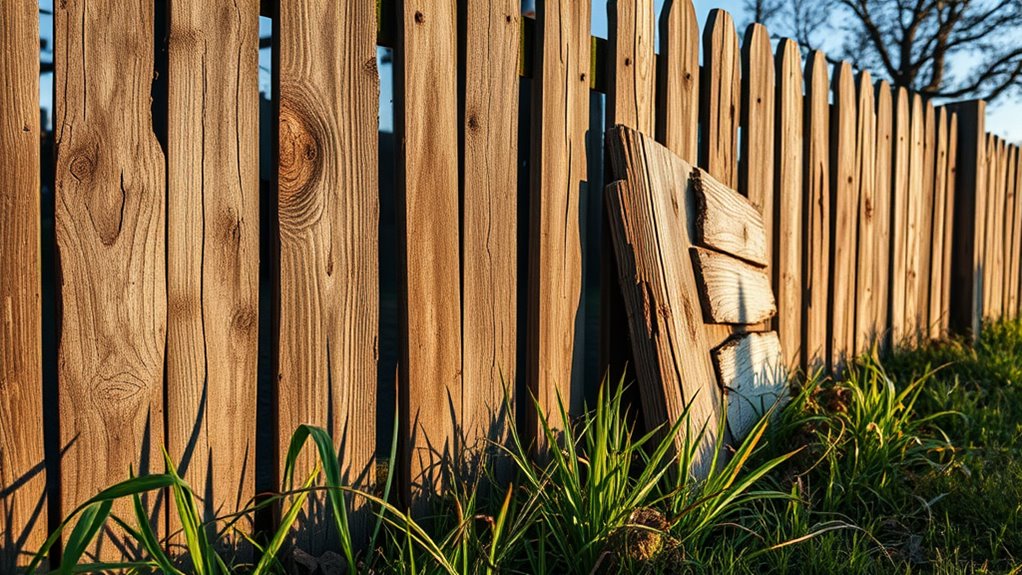
Rising maintenance costs for fences can add up quickly, making it crucial to assess if your current fence is worth keeping. If you find yourself frequently scheduling repairs, it might be time to explore your options.
With labor costing around $50 per hour and materials adding to expenses, your maintenance budget can take a hit. For instance, repairing a wood fence ranges from $13 to $27 per linear foot, while wrought iron repairs can soar to $50 per foot. Repair costs for small sections typically range from $180 to $500, which can quickly accumulate if repairs are needed often. Additionally, if you're considering a replacement, alternative fencing types can provide cost-effective solutions.
If your fence is leaning or has fallen, repairs could set you back between $250 and $600. Even small repairs might seem manageable at $100 to $200, but costs can escalate with ongoing issues. Custom work for non-standard heights can also increase expenses.
Adding staining or painting costs, which can range from $3.50 to $13 per linear foot, only compounds the financial burden.
If you're spending more on repairs than a new fence would cost, it's worth considering an upgrade to enhance your home's value and curb appeal.
Security and Safety Risks

A fence with gaps or broken sections can compromise your privacy and allow unauthorized access. Security fencing serves as a critical barrier against potential threats, making it essential to address these issues promptly. It is important to consider the functionality of fencing to ensure it meets your specific security needs. Sharp edges can pose serious risks to children and pets. It's crucial to fix these issues quickly. Regular maintenance and prompt repairs are key to keeping your property secure and safe.
Gaps and Broken Sections
Identifying gaps and broken sections in your residential fence is crucial for maintaining security and safety.
These issues can compromise your fence's integrity and create easy access for trespassers.
Regular inspections are essential to catch problems early. Additionally, understanding property lines ensures that any repairs or replacements are compliant with local regulations.
Consider these points:
- Gaps can let unwanted wildlife in, leading to property damage.
- Broken sections pose risks for injuries or create obstacles.
- Unstable fences may collapse in severe weather, endangering safety.
- Ignoring repairs can increase replacement costs over time.
Stay proactive to keep your fence and property secure.
Sharp Edges and Hazards
Sharp edges and protrusions on your residential fence can pose serious safety risks. Regular inspections are crucial to catch hazards caused by rust, corrosion, or poor installation.
For instance, broken glass or rusty metal can result in painful injuries that may require emergency care. Regular inspections are essential to catch signs of deterioration, ensuring that issues are addressed before they become hazardous.
Inspect your fence in high-traffic areas, both inside and outside your property. While sharp edges may not be life-threatening, they're preventable.
To minimize risks, regularly treat or paint metal fences to prevent rust and reduce sharp edges.
Proper installation is key to preventing protrusions that can become hazardous over time.
Additionally, grounding metal fences can lower the risk of electrical issues, especially in humid or salty environments.
Privacy Compromise and Exposure
Compromising your home's privacy can lead to security risks that are often ignored. A worn-out fence can allow intruders easier access and reduce your property's defenses.
Here are signs your fence may need replacing:
- Visible damage: Rust, decay, or broken panels can make your fence less secure.
- Instability: A sagging or leaning fence won't effectively deter trespassers.
- Missing parts: Loose or damaged components can create entry points for burglars.
- Gaps: Openings in a privacy fence can expose your yard, increasing the risk of targeted break-ins. Additionally, a strong fence serves as a physical deterrent, making unauthorized access significantly harder.
If your fence isn't providing the privacy and security you need, it's time to consider a replacement. A sturdy privacy fence enhances security and gives you peace of mind, making your home a safer place.
Don't wait—address these issues before they worsen.
Aesthetic Deterioration
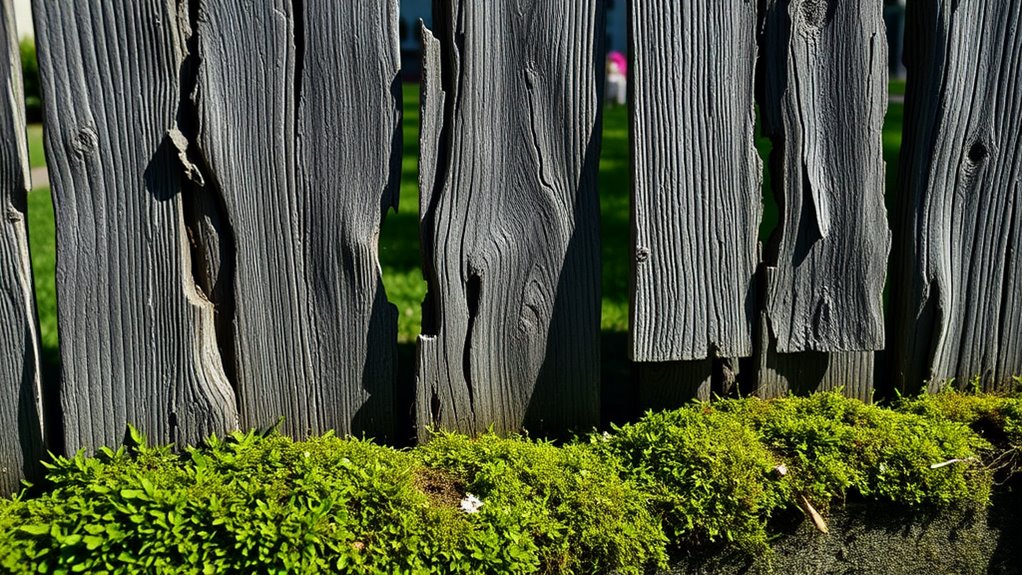
A worn-out fence can significantly reduce your property's appeal, so it's important to spot signs of deterioration. Look for stains or discoloration—these often indicate corrosion or weather damage.
If you see rotting wood or mold, not only do they look bad, but they also weaken the fence. Wood rot can occur when moisture seeps into the wood, especially at ground level, leading to decay if not addressed.
An outdated fence can clash with modern designs, making your home seem less inviting. Leaning, sagging, or splintering sections give off a neglected vibe, and missing boards or holes need immediate attention.
Using low-quality materials can speed up deterioration and lead to costly repairs. Investing in sturdy materials and professional installation ensures your fence lasts longer and looks great.
Property Value Decline
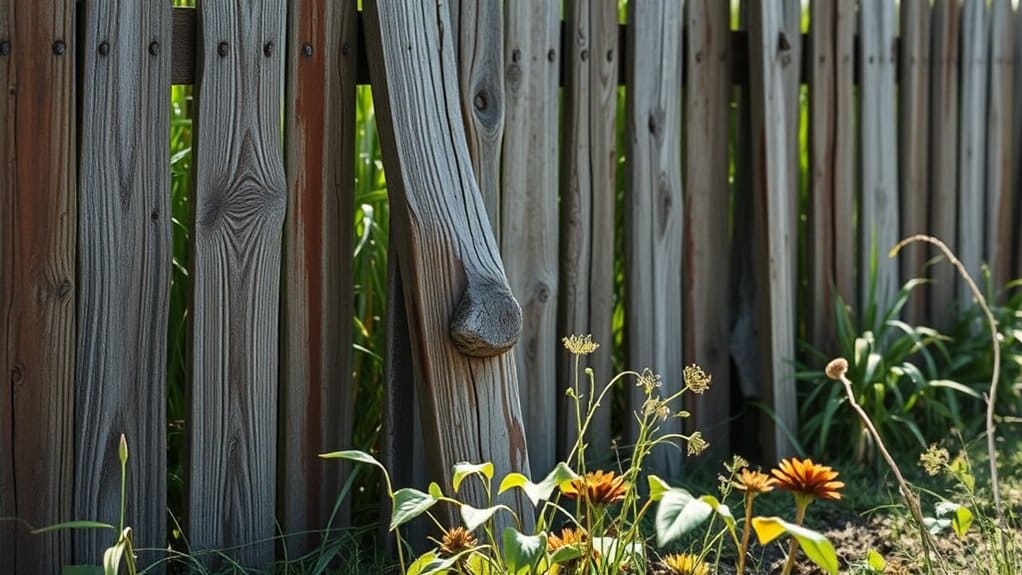
Your fence significantly impacts your property's value, and neglecting it can lead to a decline. An unkempt fence can make your property look less appealing and signal poor maintenance to potential buyers.
Here are key factors that can decrease your property's value:
- Neglect: Broken boards or peeling paint create an uninviting appearance.
- Blocked Views: Solid fences can obstruct scenic views, making your home less attractive.
- Inappropriate Materials: Fences that don't match neighborhood standards can reduce appeal.
- Local Code Violations: Non-compliant fences may face fines or removal, affecting value.
To protect your investment, consider upgrading your fence if it's worn or mismatched with your neighborhood. A well-maintained fence enhances curb appeal and overall property value, while quality fencing can significantly increase property desirability.
Don't underestimate the importance of your fence—invest wisely for long-term benefits.
Environmental Damage
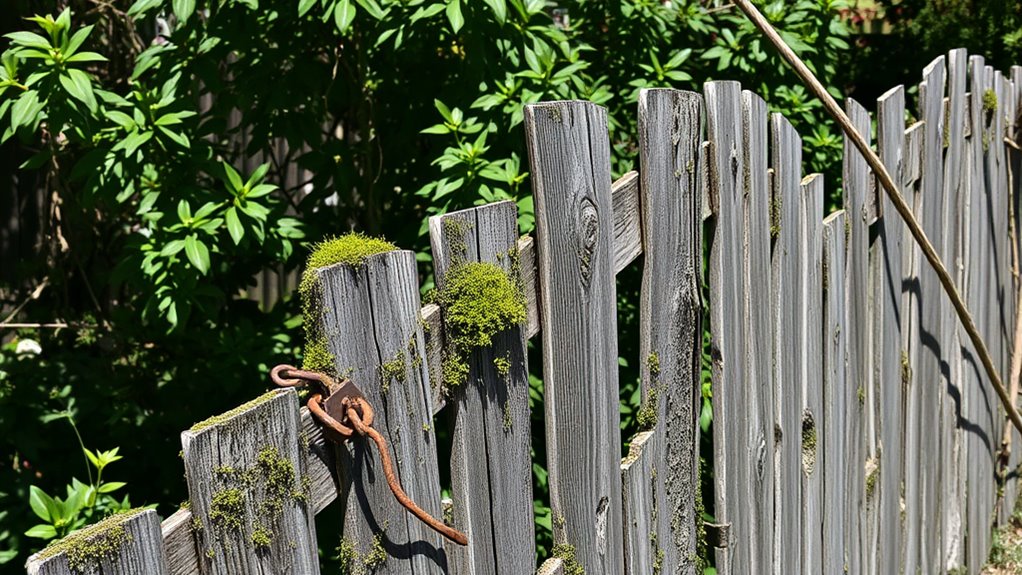
Environmental damage can significantly shorten the life of your fence and affect its look.
Harsh weather can cause warping, fading, and insect problems, which can weaken it.
If you see moisture build-up or signs of decay, consider replacing your fence before it poses safety risks.
Weather Exposure Effects
Over time, harsh weather can severely damage residential fences, affecting their strength and appearance. If your fence shows signs of wear, it may be time for an upgrade.
Regular maintenance helps, but some materials offer better weather resistance.
Watch for these warning signs:
- Broken or Missing Planks: Weather can crack or break wood.
- Discoloration: Sun exposure fades paint and finishes.
- Warped Wood: Dry rot can cause sections to bend and weaken.
- Loose Hardware: Weather can loosen hinges and latches, impacting functionality.
If you notice these issues, evaluate your fence's ability to withstand future weather.
Regular inspections can guide your maintenance schedule. However, if the damage is significant, replacing the fence may be the best option for safety and aesthetics.
Moisture Accumulation Issues
Moisture accumulation can seriously damage residential fences, affecting both safety and appearance. If you see mold or mildew, it's a sign of water damage that can weaken the fence's structure.
Warped panels suggest moisture has created soft spots, threatening stability.
To prolong your fence's life, prioritize moisture control. Regular inspections can help identify issues early, saving you from costly repairs.
If your fence is near waterlogged gardens, consider enhancing drainage to reduce moisture absorption.
While chemical treatments might seem appealing, they can harm local ecosystems. Opt for sustainable materials and natural wood treatments instead.
If upkeep becomes too demanding, replacing the fence might be more cost-effective. Addressing moisture issues promptly ensures your fence stays safe and attractive for years.
Insect Damage Risks
When maintaining your residential fence, be aware of insect damage risks that can lead to serious structural problems. Pests like termites, carpenter ants, and wood-boring beetles can compromise your fence's integrity.
To safeguard your investment, implement pest prevention strategies and learn to identify insects.
Look out for these signs of insect damage:
- Holes and tunnels in wood posts
- Weak or unstable posts
- Wood debris or sawdust at the fence's base
- Warped or bowed panels
Regular inspections can help you spot issues early. If you see any warning signs, it may be time to replace your fence.
Choose insect-resistant materials like cedar or pressure-treated wood, or consider alternatives like vinyl or aluminum.
Taking proactive steps against insect damage can extend your fence's life and protect your home's value.
Insect and Pest Infestation
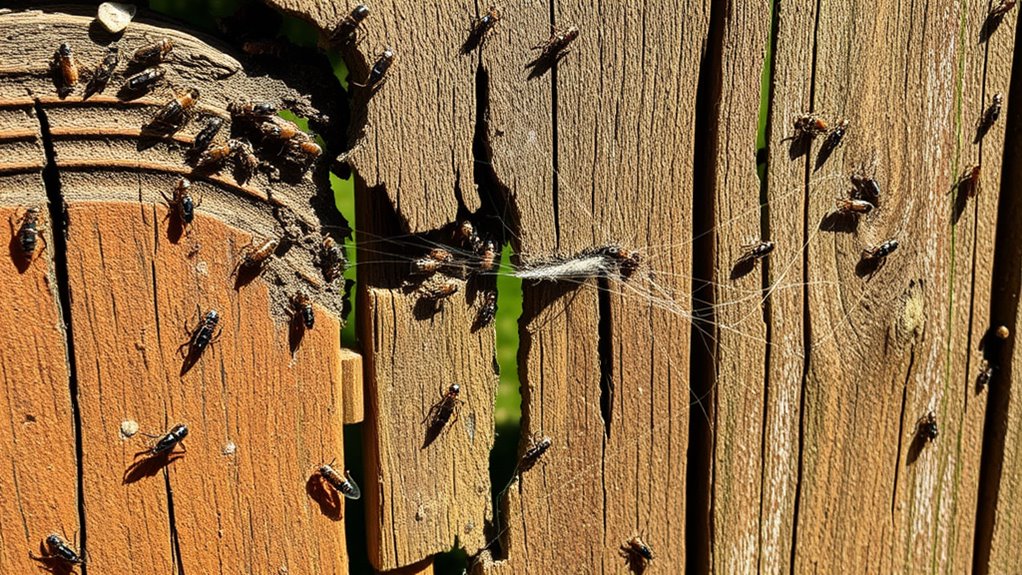
When maintaining your residential fence, watch out for insect and pest infestations that can cause significant damage if not addressed early. Here are common pests and what to look for:
| Pest Type | Signs of Infestation |
|---|---|
| Termites | Mud tubes, discarded wings, frass |
| Carpenter Ants | Wood shavings, hollow sounds |
| Carpenter Bees | Round holes in wood |
Regular inspections are crucial. Check for the signs listed above, and if you find any issues, treat the infested wood right away. Sealing cracks and fixing moisture problems can also help prevent pests.
If your fence shows sagging or buckling, it may indicate damage from insects. This not only leads to costly repairs but can also create safety hazards. In serious cases, replacing the fence might be necessary. Stay vigilant to protect your investment!
Desire for Style Upgrade
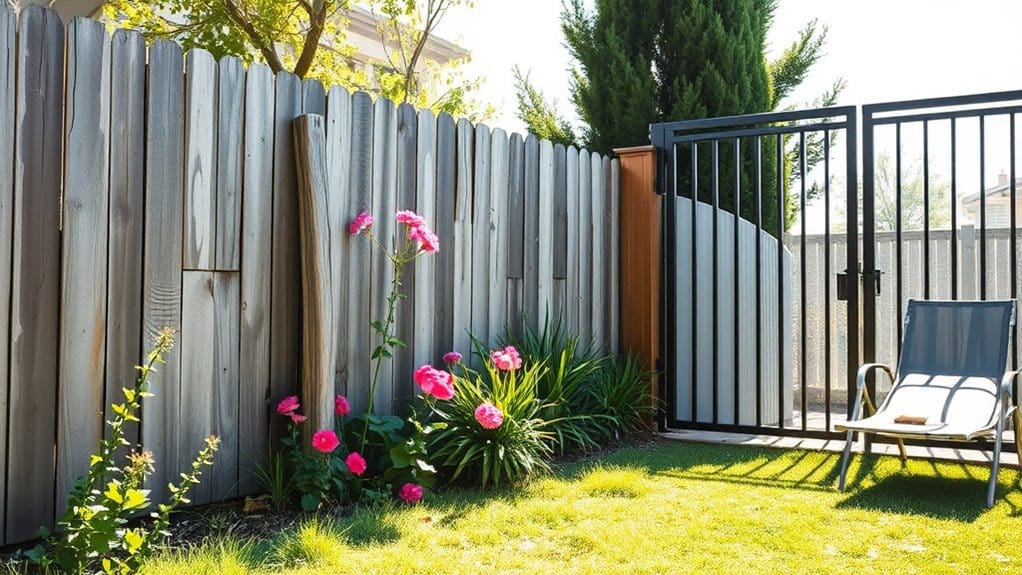
A stylish fence can greatly enhance your home's exterior.
If your current fence is looking worn or doesn't match your style, it may be time for an upgrade.
Consider modern materials and designs that offer both beauty and function.
Here are some important points to think about:
- Wear and Tear: An old, sagging fence can ruin your home's look.
- Style Compatibility: A fence that clashes with your home's architecture can pull down its curb appeal.
- Low Maintenance: Materials like vinyl and aluminum are long-lasting and need less upkeep than wood.
- Privacy Improvement: A taller or sturdier fence can boost your privacy and security.
Upgrading your fence could be a game-changer for your home's appearance and functionality.
Frequently Asked Questions
How Long Does a Typical Fence Last Before Needing Replacement?
A typical fence lasts about 15 to 20 years, but this can vary based on factors like material and maintenance. For example, a wooden fence may need more upkeep than a vinyl one. Regular care can significantly extend its life, helping it endure weather and wear.
What Materials Are Best for Durable Fences?
For durable fencing, metal is a top choice due to its strength and resistance to weather. Vinyl is another great option, as it's low maintenance and won't rot. When deciding between wood and vinyl, think about how long you want your fence to last and which style you prefer.
Can I Repair My Fence Instead of Replacing It?
Consider your fence like an old book that just needs a few pages fixed. Repairing your fence can be more cost-effective and help preserve the appeal of your yard compared to replacing it entirely.
How Do I Choose a Professional Fence Installer?
When selecting a professional fence installer, focus on their qualifications. Ensure they have the necessary licenses and certifications. Look for experience in similar projects and read customer reviews. Ask for detailed quotes to understand costs, and confirm they adhere to proper installation practices to ensure your project is a success.
What Permits Are Needed for Fence Replacement?
Before replacing your fence, check your local regulations for required permits. Usually, you'll need a standard building permit. It's also a good idea to review any zoning laws or neighborhood guidelines to ensure you meet all requirements for your project.
Conclusion
Your fence is the first thing people notice about your home. If it's damaged or deteriorating, it can hurt your property's appeal. Just like you wouldn't wear a worn-out jacket to an important meeting, it's time to think about replacing your fence if you see signs of decay or if repairs are becoming too costly. A new fence not only improves your home's look but also enhances its security and value. Don't delay—upgrade your fence today!
